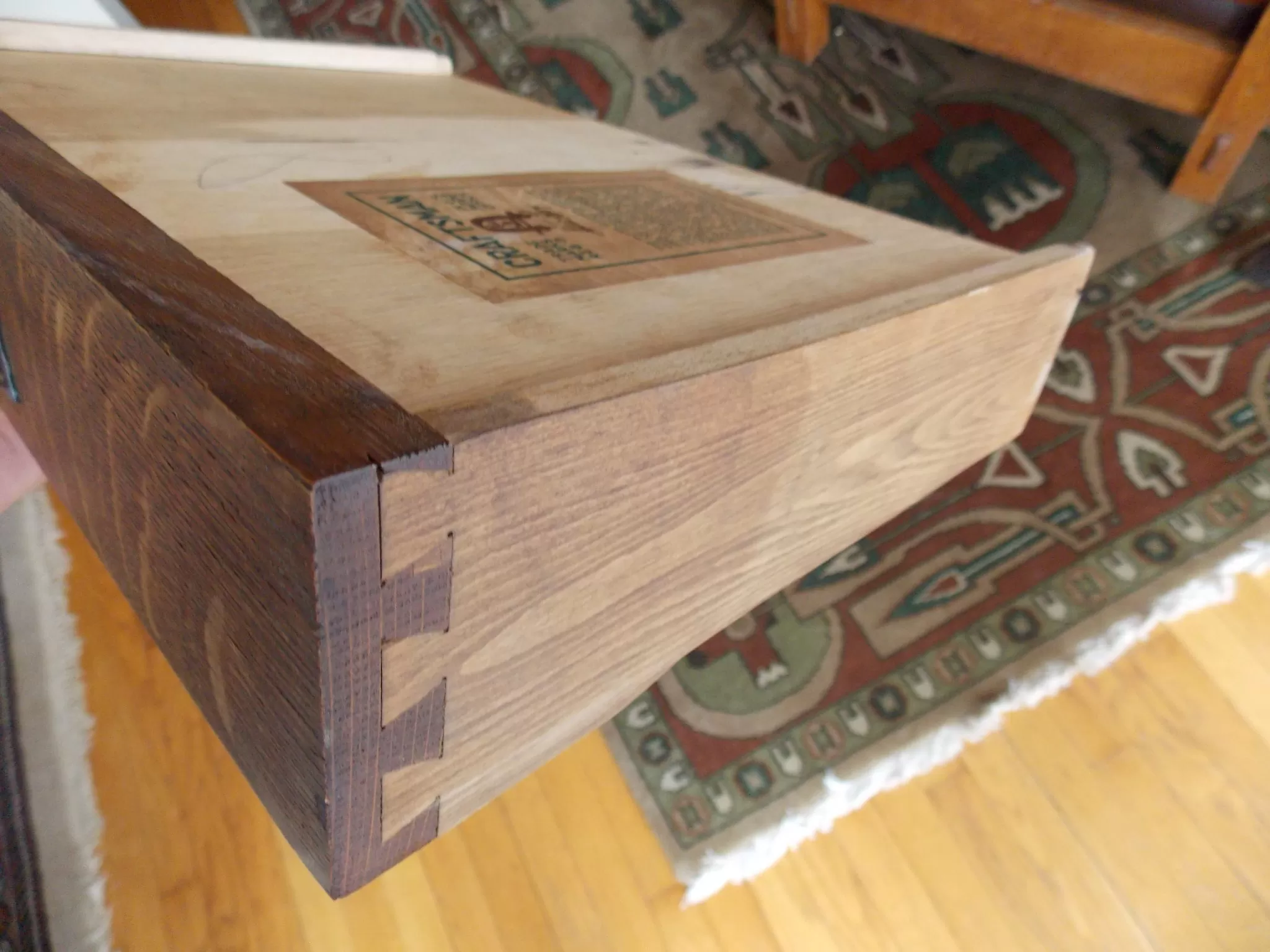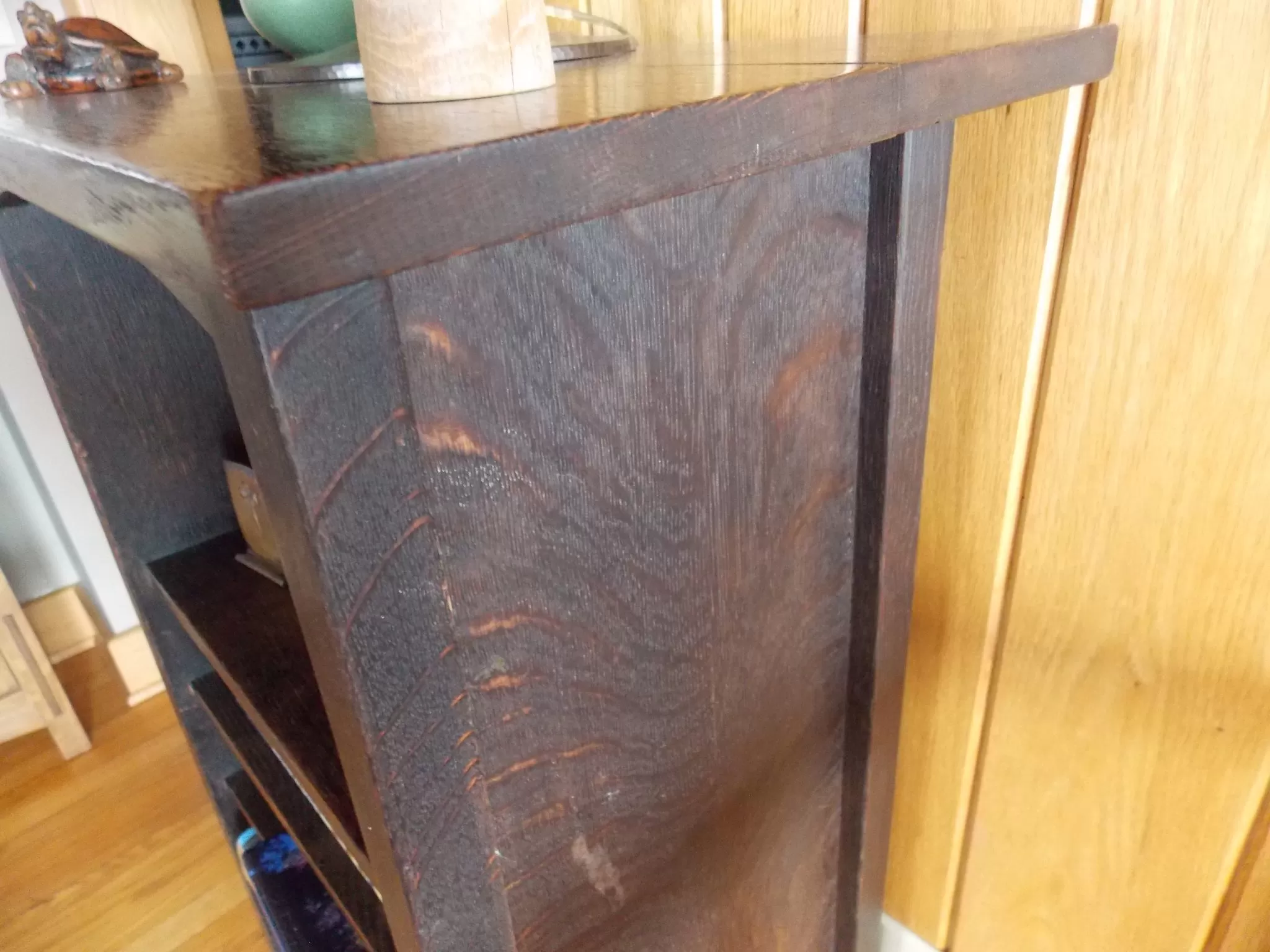“Has it been refinished?”
by Bruce Johnson
Arts and Crafts collectors, just like those in other fields, place a premium on examples which have survived more than a century of use with their original finish intact. That is not to imply that refinished pieces should be avoided, for a proper new finish does not diminish the usefulness nor the design of a fine piece of furniture.
But it does affect its dollar value, so in order to avoid paying an original finish price for what turns out to be a refinished piece of furniture, here are a few tips.
- Just like there is no such thing as a perfect crime, there is no such thing as a perfect refinishing. Play furniture detective, arming yourself with a strong flashlight and a magnifying glass or strong set of reading glasses.

- Most refinished Arts and Crafts pieces were done so to make them lighter in color, so start by checking for small areas of darker, original finish in hard to reach places: around keyed tenons, in sharp corners, and around hardware.

- Speaking of hardware, use your magnifying glass to inspect it. If you find microscopic scratches left by sandpaper or steel wool, be suspicious, for the refinisher might have been too lazy to remove the hardware. Check the screws holding it on as well. If they look tampered with, then the refinisher might have removed them before refinishing the wood.

- Pull out the drawers and inspect the back, the bottom and the inside of each one, looking for “stripper scars” – finish that had been dissolved by a run or drip of a solvent finish remover.
- Look around the shopmark. An Arts and Crafts refinisher would know not to destroy the decal, so he may have protected it with masking tape. Use your flashlight and magnifying glass to look for a suspicious darker box of original finish around the shopmark.

- Pull any large case piece, such as bookcases and china cabinets, away from the wall and inspect the back, again looking for stripper scars or runs of new finish.
- Get down on your hands and knees and inspect the underside of tables or pieces too heavy to turn over. You have to inspect the critical underside, again looking for stripper scars, sandpaper scratches, signs of a new application of stain, and runs or drips of a new finish.

- Study those pieces known to have their original finish, so you know what any piece you are considering should look like.
- Finally, get it in writing. If the seller insists that the piece has its original finish, simply ask for them to put that guarantee on the receipt.
So, should you pass on any piece that has been refinished?
No, but you should not pay the same price as one with an original finish.
“The more you know, the more you find.”
Have a suggestion to add? Just scroll down and click on our Facebook link!
Thanks!
Bruce
